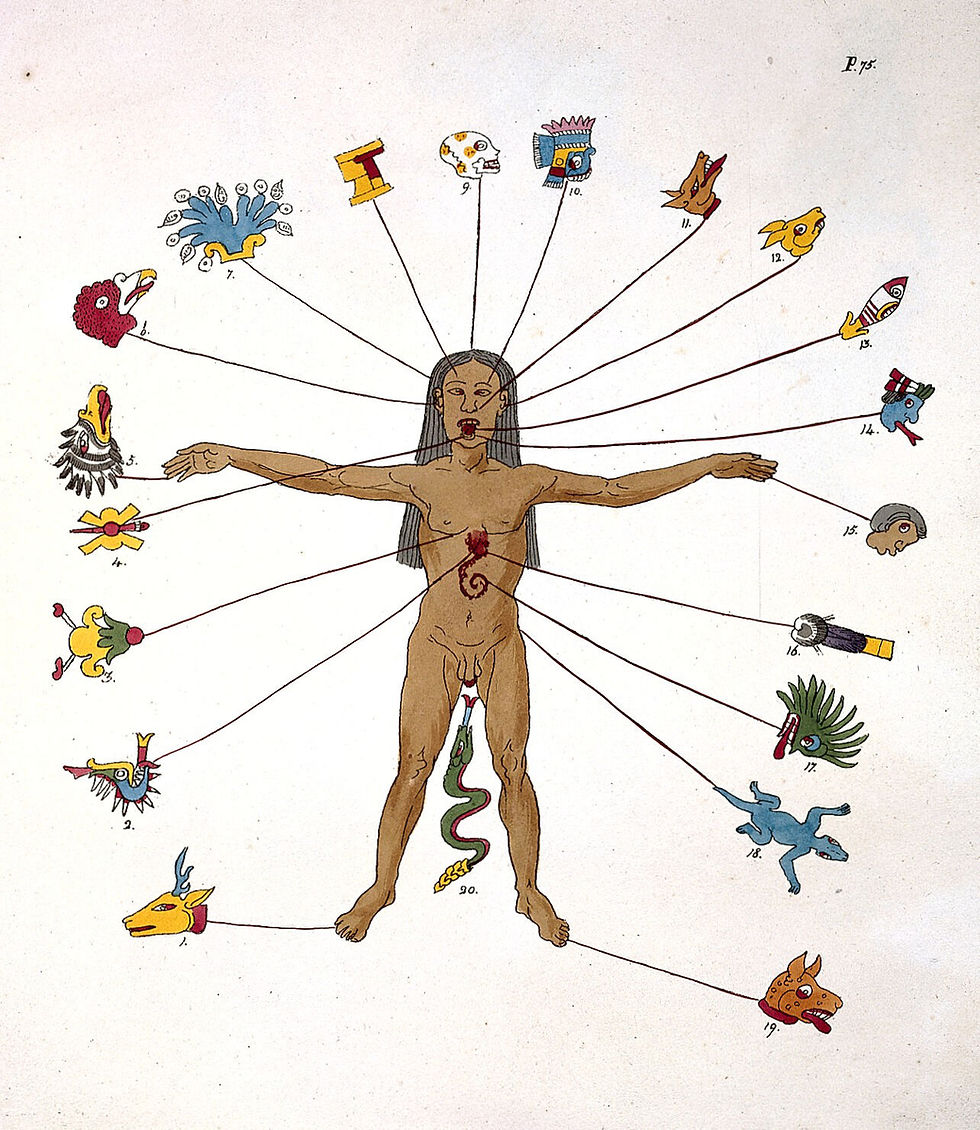What Is Embodied Simulation (And How To Make A Good Use of It In Therapy)
- Ana

- Sep 14, 2024
- 4 min read
On using fictional and real others to experience a shift in how we perceive the world, through embodiment. Just toying with some ideas from neuroscience, really.

My life, growing up, was not always the best, and one of my go-to strategies for coping with adversity was to 'step into the skin' of someone else, using what I imagined would be their way of dealing with the challenges life threw at me. These 'others,' whose 'skin' I borrowed, included people from my life who left a lasting positive imprint on me. Sometimes, these others were real - teachers, friends, or even well-meaning strangers who exuded an attitude I felt I could co-opt. Other times, they were fictional - characters or magical helpers from books and movies that I felt a strong emotional connection to.
The whole experience was somewhow closely related to the body language of the person in question. I would embody their posture or movements, and it would somehow automatically shift my mindset and state of mind. Does this make sense?
I remember almost feeling their 'spirit' posessing me. In the best possible way.
I was not escaping the reality, I don't think. I think I was trying to face it equpped using 'armour' that was bigger and stronger than mine at the time.
And if you’re expecting some fairytale characters promoting a picture-perfect life, you couldn't be further from the truth. Growing up, I often felt a lot like Henry Chinaski from Ham on Rye, for example. Or Holden Caulfield.
If you know these books, you’ll understand. While neither Henry nor Holden could offer any answers to life (which would be antithetical to the very spirit of their stories), their attitudes, views, and inner resistance gave me so much strength over time.
Embodied simulation
While I experienced this capacity to change through acquiring attitudes of others through embodiment throughout my life, it was only upon learning about embodied simulation that I started thinking about what could be the neural correlates of this strange phenomenon. I heard about it for the first time while reading a book on how our language and brains make meaning .
In the idea there are two elements, so let's look at them separately.
What is embodiment
Embodiment, in cognitive neuroscience and cognitive psychology, refers to the idea that many aspects of cognition are fundamentally linked to the physical body and its actions. Although embodiment and embodied cognition were initially theoretical concepts lacking empirical validation, the discovery of mirror neurons provided a possible explanation for how we can understand and empathise with others through our own bodily and visceral experiences.
In the realm of neuroscience of emotions closer maybe to psychotherapy world, Antonio Damasio is a notable advocate of the embodied nature of emotions.
What is simulation
The word simulation can evoke computer programs and the virtual reality games. In this context, however, the simulation refers to 'the production of pretend mental states that match the mental states of others as closely as possible'.
Another way to think about it, without involving others, is to consider how you might imagine the taste of strawberries without actually eating them. You would likely 'simulate' the experience in your mind. Similarly, if asked to recall how you open a lock with a key, you would probably start simulating that action mentally, through an embodied imagined experience.
In a nutshell, that is the idea of embodied simulation.
While it is not straightforward for neuroscience to confirm or refute the hypothesis that we use embodied simulation in everyday life, there is some empirical evidence supporting it.
Embodied simulation in psychotherapy?
I use this technique in therapy to cultivate inner representations that can help clients initiate changes in attitude and face adversity. It serves as a primer of sorts, for developing a new kind of self, much like how I used it when I was a child.
And so, in my work, my clients and I have used Of Human Bondage to explore the dark depths of love addiction, Damien to work with feelings of rejection by one's peers, and even movie characters portrayed by Matthew McConaughey to help one client get his groove and mojo back. To be fair, Matthew McConaughey does mainly play the same character all over again!
It doesn’t have to be a character experiencing a major catastrophe or drama in their life. Even Bart Simpson, can impart important knowledge on ways of being. What matters is that the characters is grounded in some form of lived experience and that the client emotionally strongly relates to that.
The better the writer and the more developed the 'theory of mind' within the character's universe, the more effectively a character can serve as a genuine internal supportive figure for the client.

As I explore these ideas, not being a neuroscientist myself, I am really just toying with them. However, I can’t help but wonder: could the neural mechanism behind this be embodied simulation?
If this sparks any thoughts, memories or reflections of your own I would love to hear about it.
As always, thank you for reading. For updates you can follow me on BlueSky or Twitter or subscribe to my mailing list.




Comments